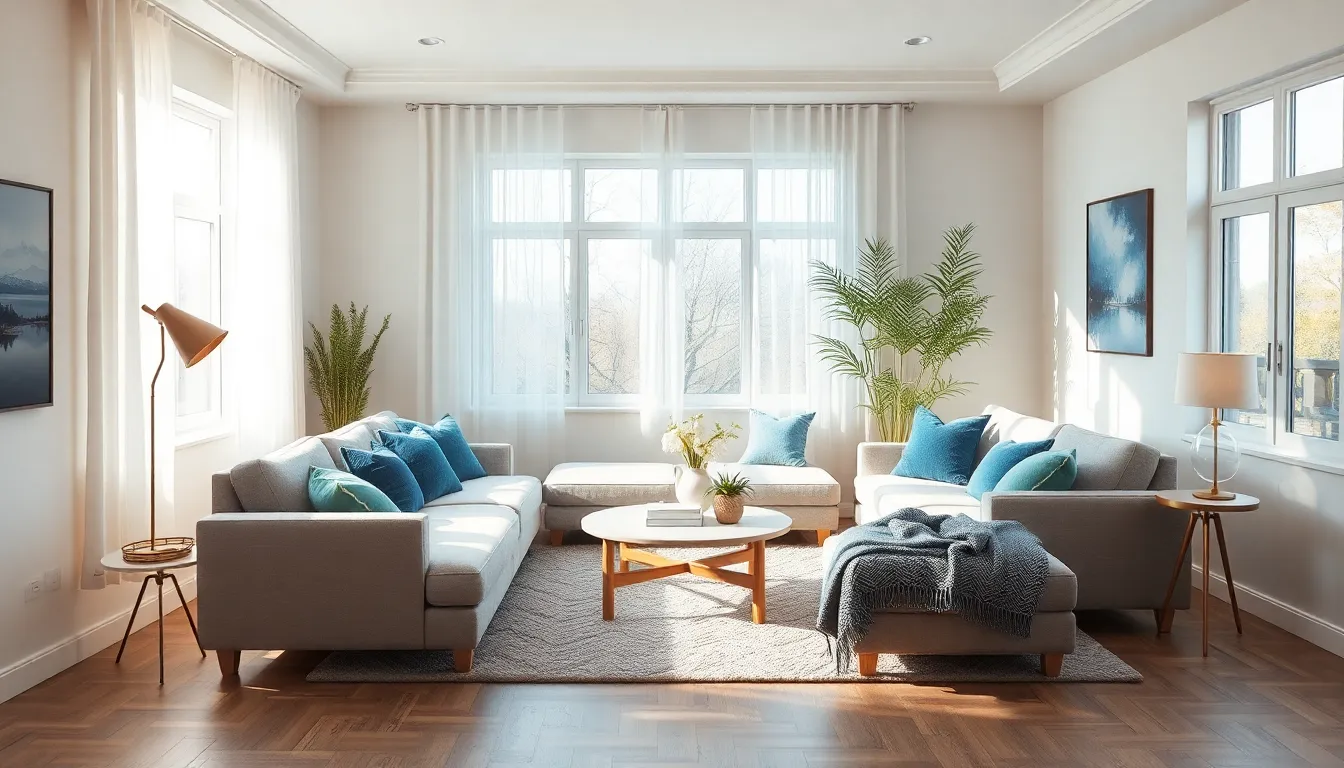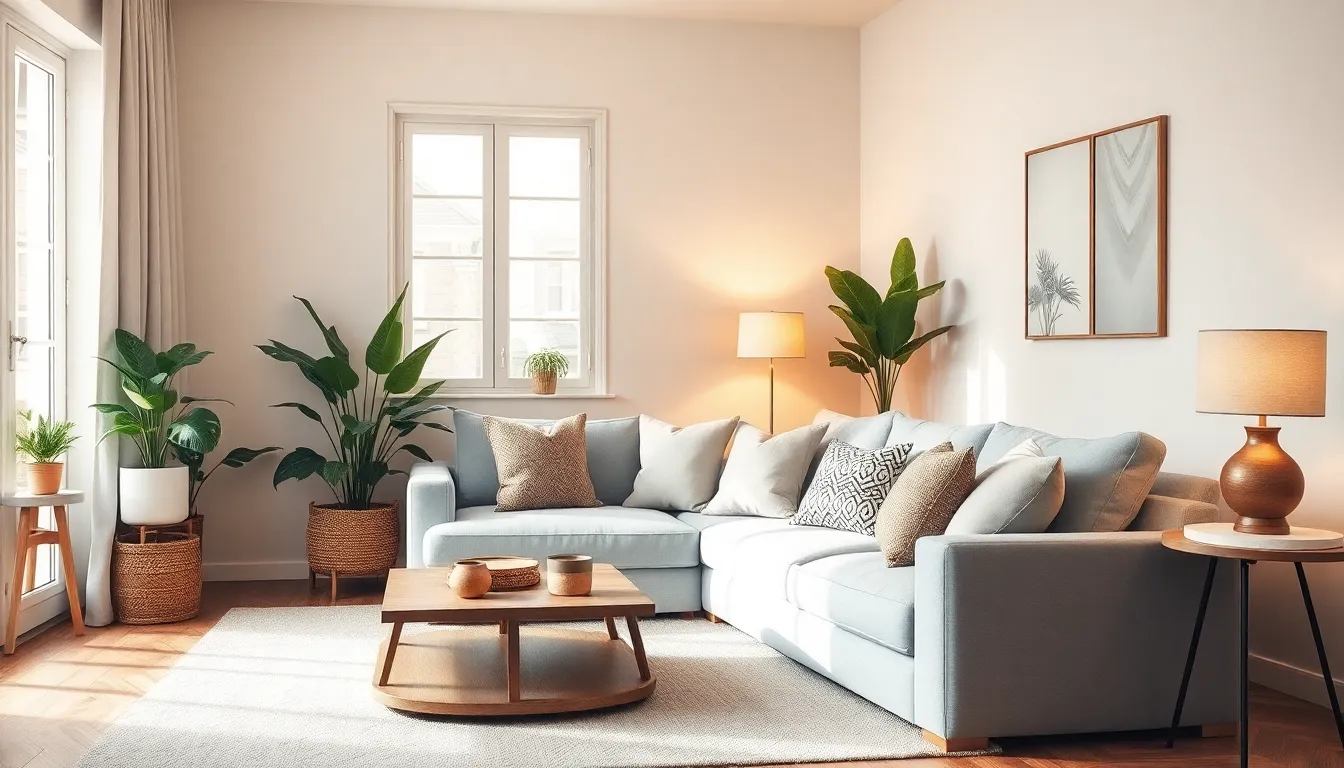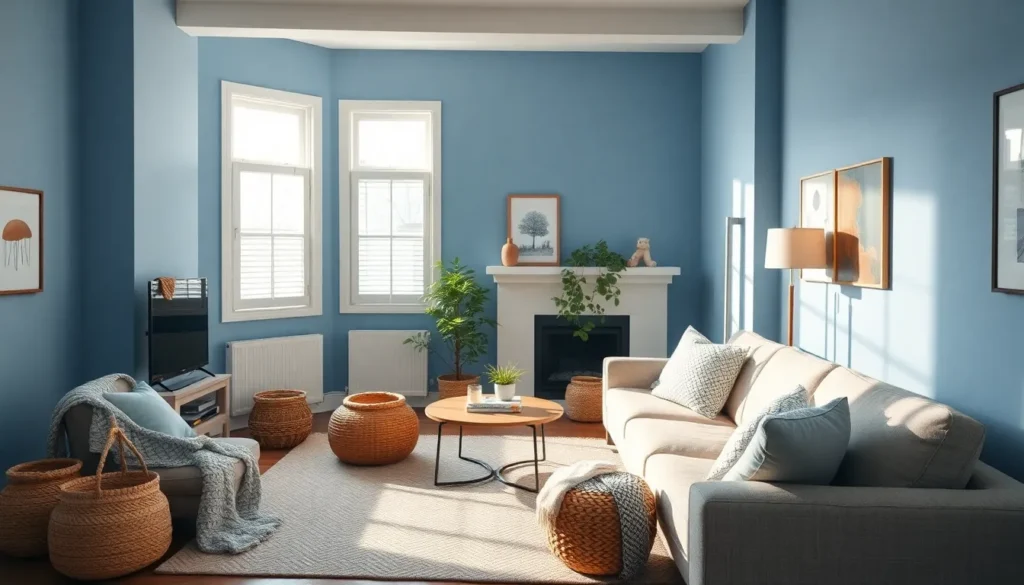In today’s fast-paced world, creating a calming ambiance has become essential for maintaining mental well-being. Whether at home, in the office, or during leisure time, the right atmosphere can significantly reduce stress and promote relaxation. From soothing colors to gentle lighting, every element contributes to a serene environment that nurtures peace of mind.
People are increasingly recognizing the importance of a calming ambiance in their daily lives. It’s not just about aesthetics; it’s about fostering a sanctuary where one can unwind and recharge. By incorporating simple yet effective design choices, anyone can transform their space into a tranquil retreat that encourages mindfulness and rejuvenation.
Table of Contents
ToggleUnderstanding Calming Ambiance
Calming ambiance refers to an environment that fosters tranquility and relaxation through various sensory elements. It plays a crucial role in enhancing well-being in both personal and professional settings.
Definition of Calming Ambiance
Calming ambiance encompasses physical and emotional characteristics that create a peaceful atmosphere. Elements such as soft colors, gentle lighting, natural materials, and pleasing scents contribute to this ambiance. Key components include:
- Colors: Soft hues like blue and green promote relaxation.
- Lighting: Warm, dim lighting reduces anxiety and encourages comfort.
- Sound: Ambient sounds, like gentle water or soft music, enhance serenity.
- Texture: Natural materials such as wood or stone add warmth and comfort.
Importance of Calming Ambiance
Calming ambiance significantly impacts mental health and productivity. Creating a soothing environment can lead to:
- Stress Reduction: Experiencing a tranquil setup lowers cortisol levels, decreasing stress.
- Improved Focus: A serene space enhances concentration, leading to better work performance.
- Mindfulness Promotion: Calm surroundings encourage present-moment awareness and meditation.
- Enhanced Rest: A soothing environment improves sleep quality, contributing to overall well-being.
Investing in a calming ambiance yields tangible benefits for mental health and daily life.
Elements of Calming Ambiance


Creating a calming ambiance relies on key elements that facilitate relaxation and tranquility. These elements include color schemes, lighting choices, and furniture arrangement.
Color Schemes
Choosing soft, neutral colors significantly influences the ambiance of a space. Blue and green tones promote relaxation and reduce anxiety. Pastels create a gentle atmosphere, while earth tones add warmth and coziness. Combining complementary colors in moderation enhances harmony without overwhelming the senses. Incorporating colored accents can introduce personality to a calming environment without detracting from its soothing essence.
Lighting Choices
Utilizing warm lighting fosters a serene environment. Soft, diffused lighting reduces harsh shadows and glare, creating comfort. Natural light enhances mood and focus, making it essential for calming spaces. Additionally, layering different light sources, like table lamps and string lights, provides versatility and invites warmth. Dimming options allow for adjustable brightness, contributing to the tranquility needed for various activities.
Furniture Arrangement
Arranging furniture thoughtfully promotes an open and inviting atmosphere. Ensuring ample space for movement prevents clutter and encourages relaxation. Positioning comfortable seating pieces toward natural light sources fosters connection and serenity. Incorporating cozy textiles, such as plush cushions and soft throws, enhances comfort. A balanced layout incorporates both functionality and flow, making the environment feel more harmonious and calming.
Creating a Calming Ambiance at Home
Designing calming spaces at home involves thoughtful choices in decor, furniture, and arrangement. Each room contributes uniquely to the overall tranquility of the residence.
Living Room Tips
- Color Selection: Use soft blues, greens, and neutral tones to create a serene backdrop. These colors promote relaxation and tranquility.
- Lighting Strategy: Incorporate warm lighting through floor lamps and table lamps. Layered lighting adds depth; consider dimmers for adjustable brightness.
- Furniture Arrangement: Position seating to encourage conversation while maintaining openness. Create cozy nooks with comfortable chairs and pillows for relaxation.
- Textural Elements: Add natural textiles like woven baskets, soft throws, and plush rugs. These elements enhance comfort and warmth.
- Sound Elements: Introduce calming sounds with a water feature or calming music. Sound machines can also provide soothing background noise.
Bedroom Recommendations
- Color Palette: Emphasize soft pastels or earthy tones to evoke a sense of calm. Neutral shades create a restful environment.
- Lighting Options: Utilize adjustable lighting with bedside lamps. Avoid harsh overhead lights and opt for soft, warm light to promote relaxation.
- Bedding Choices: Select high-quality, breathable fabrics for bedding. Opt for calming hues and cozy textures to enhance comfort.
- Clutter Management: Keep visible surfaces tidy to reduce visual stress. Use decorative storage solutions to maintain an orderly space.
- Aromatherapy: Incorporate calming scents through essential oils or candles. Lavender, chamomile, and jasmine are effective for creating a soothing atmosphere.
Outdoor Spaces
- Plant Selection: Add greenery with potted plants or garden beds. Plants like lavender or jasmine promote relaxation with their scents.
- Seating Arrangements: Create cozy seating areas using comfortable outdoor furniture. Consider cushions and throws for added comfort.
- Natural Features: Utilize natural elements, such as wood and stone. Incorporate water features or rock gardens for serenity.
- Lighting Design: Use subtle outdoor lighting, such as string lights or lanterns. Soft illumination enhances evening tranquility.
- Sound Elements: Incorporate nature sounds with wind chimes or a water fountain. These sounds promote relaxation and a connection to the outdoors.
Benefits of a Calming Ambiance
Creating a calming ambiance has significant benefits for mental and physical health. These advantages contribute to an overall improvement in quality of life.
Mental Health Benefits
A calming ambiance helps reduce symptoms of anxiety and depression. Soft colors and gentle lighting create a peaceful environment that fosters relaxation, ultimately promoting emotional well-being. Engaging the senses through ambient sounds encourages mindfulness, allowing individuals to focus on the present moment instead of stressors. Research indicates that serene spaces enhance creativity and boost productivity, leading to improved mental clarity. Personalization of these spaces enables individuals to curate their ideal sanctuary, further supporting mental health.
Physical Health Advantages
A calming ambiance influences physical health by promoting better sleep quality. Soft lighting and soothing color schemes signal the body to relax, preparing it for rest. Improved sleep contributes to enhanced immune function and overall vitality. Additionally, reduced stress levels through tranquil environments lead to lower blood pressure and decreased muscle tension. Elemental aspects like incorporating plants increase air quality, further benefiting physical health. Regular exposure to calming spaces fosters a sense of well-being that positively impacts overall physical health.




